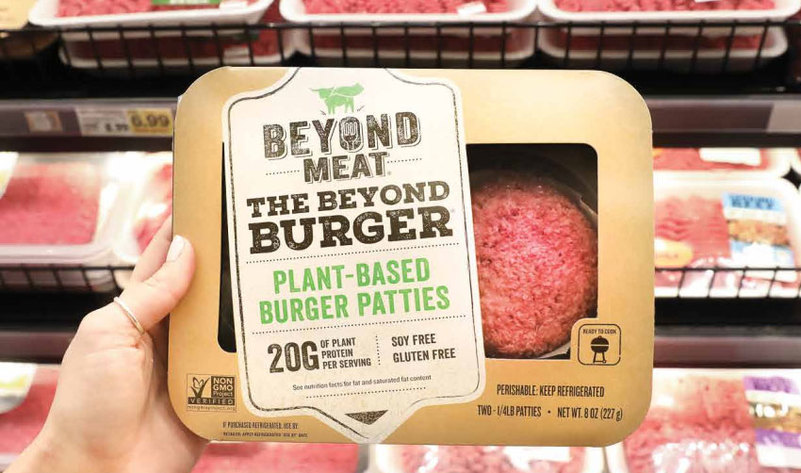
Learn the Five Anchors of Authenticity
December 11th, 2019 Posted by Emergent brand marketing, Brand preference, brand strategy, CMO, consumer behavior, Consumer insight, Emotional relevance, Growth, Higher Purpose, storytelling, Transparency, Validation 0 comments on “Learn the Five Anchors of Authenticity”A required course on the path to business growth
Yes, the word authenticity may have reached cliché status given its pervasive use as a shorthand explanation of what drives best practices today in brand building. However, truth is, sea changes in consumer culture and resulting purchase behaviors foretell how vital authenticity is to create meaningful relationships between brands and their users.
- Yet too many companies fail to make authenticity a core platform in their marketing plans, missing the opportunity for real engagement and connection they require to advance the business.
Like moving away from highly processed cheese food (fake) in favor of real natural cheese (genuine), authenticity has much to do with the yearning for belief, higher quality and a better, more meaningful and relate-able story.
This age of authenticity is fueled by a fundamental rule: consumer-centric thinking and planning is a prerequisite. In practice, this means that an organization’s –
Every decision
Every strategy
Every tactic
Every investment
must build from a continuous study and acutely deep understanding of the consumer’s needs, wants and aspirations. The consumer should sit at the heart of the business. All strategic moves emanate from insight about their concerns and interests.
“Customer first” is a long-standing axiom of the retail industry, but as obvious as it may sound, most companies live in a perpetual state of brand narcissism. Company operational and marketing behaviors reveal it’s actually all about “us” – our product features, our benefits, our new formulas, our processes sitting in service of company business objectives.
- Today however, success springs from becoming an enabler, partner and guide on the consumer’s journey, seeking alignment with their needs and becoming a helpful resource as they work to create a better and more meaningful life.
In the absence of this sensibility, it’s no wonder that engagement with traditional marketing – that’s more often a one-way selling monologue – is rejected by consumers as irrelevant to them at best – annoying to them at worst.
Authenticity and curating a trusted consumer relationship
The core essence of what authentic means always springs from a less commercial and transactional view of the relationship between seller and buyer. There is a latent suspicion among most people that old-school marketing is really selling, and selling is a form of self-serving persuasion. Buyer beware.
The irony of all this is how human beings are wired to respond to messages. When the consumer is the hero of your story and the brand serves as guide to an improved life, engagement can be achieved. In the absence of this, messaging is primarily noise and ignored.
Thus, if an organization’s objective is assurance their marketing investments will secure traction and work in service of the brand’s growth, it is vital that authenticity is embraced and embedded into how the brand operates and communicates.
The future success of the business depends on it.
Here are the five anchors of authenticity that help drive consumer engagement and brand growth:
- Truth
Consumers are faced daily with evidence of misleading information, headlines heralding lapses in judgement and integrity; and stories of businesses operating in their own self-interest at the expense of consumer trust and confidence. An example: recently The Honest Company was outed on their absence of honesty over chemical ingredients they vowed would never be present in their products. Lawsuits have already begun. Consumers demand the truth and truth is neither conditional nor can it be diluted or violated without serious consequences.
- Transparency
Truth’s big sister, transparency is how trust is earned. When the curtain is raised and the door is opened to outside scrutiny of all aspects of the product creation process, the opportunity is there to engender trust. “Come see for yourselves that our words do not ring hollow, and that we indeed deliver on the promises we make. Go on, take a look – we have nothing to hide.” In the absence of trust people look for evidence they can believe in.
- Relevance
Who is the hero of the story told in your marketing? It’s not the brand. The customer must be the hero; their aspirations, wants and needs take precedence. When consumers see themselves in the story, they pay attention. Everything else is static. Relevance is the acid test of authenticity. It is the center of a less selfish view of the brand/user relationship. The story is always about them, and the brand’s role is Yoda (the expert guide) to Luke Skywalker.
- Directness
Consumers can smell traditional marketing a mile away. When the conversation is one-sided and filled with self-promotion and hyperbole, the opportunity for a frank and direct conversation is lost. Consumers run in the opposite direction because the story is no longer about them. Directness is an attribute of a trusted guide and resource. A real conversation set on how the brand solves the problems people face is direct and honest and open.
- Validation
In the end, consumers want to believe – but belief must be earned before trust is achieved. People no longer accept assertions and claims at face value. They look for validation of what a brand conveys from sources they respect and perceive to be honest and unbiased. This is the power of social proof and why the voices of real people talking about their experiences with the brand are so powerful. People believe their peers and outside experts before they believe what the brand itself is saying.
Have you noticed a consistent theme in here?
Trust is required for any relationship to exist and it’s hard to earn and easy to lose. The future of marketing is less about entertainment, persuasion and artifice and more about conversation and openness. The goal of every brand is to be an accepted partner on the journey to an improved, happier and healthier life.
When the brand is authentic and honest, we open the door to reciprocity. It just makes sense to put the consumer at the center of strategic planning. Once there, this insight and understanding fuels effective strategy and helps brands avoid wasting money on marketing that doesn’t connect.
Emergent has a defined process to build messaging based on these principles: an approach that eliminates guesswork and serves to draw the consumer in because they are always at the center of the story.
Can we help you build the right story? Let us know if you’d like to learn more about our unique approach to effective messaging.
Looking for more food for thought? Subscribe to our blog.
Bob Wheatley is the CEO of Chicago-based Emergent, the healthy living agency. Emergent provides integrated brand strategy, communications and insight solutions to national food, beverage, home and lifestyle companies. Emergent’s unique and proprietary transformation and growth focus helps organizations navigate, engage and leverage consumers’ desire for higher quality, healthier product or service experiences that mirror their desire for higher quality lifestyles. For more information, contact [email protected] and follow on Twitter @BobWheatley.





